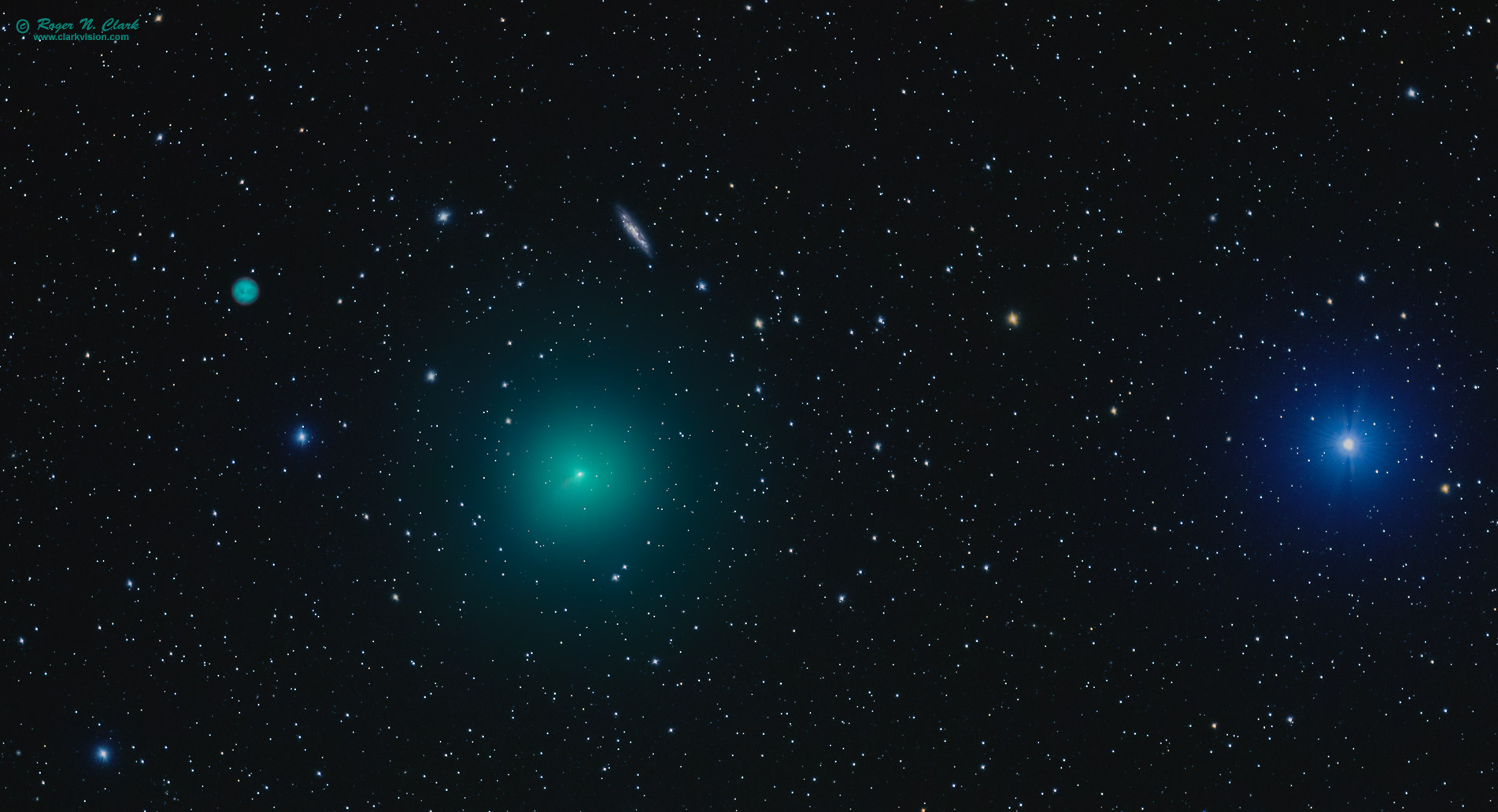| Home | Galleries | Articles | Reviews | Best Gear | New | About | Contact | Gallery Index | Previous |
Next |

| Home | Galleries | Articles | Reviews | Best Gear | New | About | Contact | Gallery Index | Previous |
Next |

Comet 41P/Tuttle-Giacobini-Kresak near closest approach to the Earth passes the planetary nebula M97 (the Owl Nebula), and galaxy M108 (the Surfboard galaxy) on March 22, 2017. Imaged from mountains in central Colorado. Technical. This image was obtained with a Canon 7D Mark II 20-megapixel digital camera and 300 mm f/2.8 L IS II lens at f/2.8 and ISO 1600. No dark frame subtraction, no flat fields. Tracking with an Astrotrac and no guiding. The total exposure was 29 minutes (twenty nine 60-second exposures) plus another 8.5 minutes of exposure (17 30-second exposures) with the 300 mm plus 1.4x TC (420 mm f/4) for the brighter parts of M97 and M108 to show finer detail. The full resolution image plate scale is 2.8 arc-seconds per pixel. The image presented here is at 5.6 arc-seconds per pixel. For a larger image at 4.5 arc-seconds per pixel click here (428 KByte image).
During the approximately 30 minutes to make the exposures, the comet moved significantly. The 29 exposures were aligned in two ways: align on the comet head so the combined image had stars trailing, then align on the stars with the comet trailing. For the align on the comet image, the stars were deleted, and for the align on the stars image, the comet was deleted, then the two images combined. To bring out some detail in the comet, a radial blur was constructed centered on the head of the comet, some intensity was subtracted and the result brightened to show the structure near the nucleus of the comet.
Post processing: stretched with rnc-color-stretch. Also see Astrophotography Image Processing Basic Work Flow.
The Exposure Factors, CEF, CEFA are measures of the relative amounts of light received from a subject. It can be used to fairly compare wildly different lens/telescope apertures and exposure times. For this image:
Modern DSLRs like the 7D Mark II include on sensor dark current suppression and low fixed pattern noise at ISOs around 1600 and higher, making no need for dark frame subtraction. Modern raw converters correct for light fall-off and also correct for hot/dead/stuck pixels. This makes processing low light images easy: simply align and average.
To learn how to obtain stunning images like this, please visit my Extensive Articles on Photography .
See my review of the Canon 7D Mark II and why it is so good for astrophotography: Canon 7D Mark II sensor analysis.
Keywords to this image = astrophoto-1 night low-light digital_astro comet canon_7d2
Image ID: comet-41p,m97,m108-rnclark-300mm.c03.22.2017.0J6A2432-60.h-0.5x-c1s.jpg
| Home | Galleries | Articles | Reviews | Best Gear | Science | New | About | Contact |
Last updated December 20, 2025